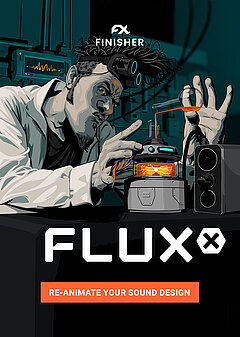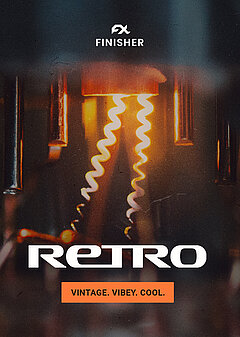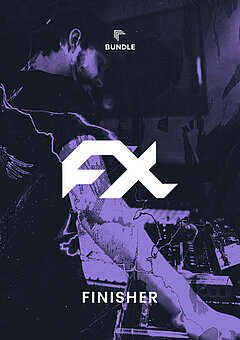How to Make Glitch Hop
Everything you need to quickly master the drums, bass design and unique effects of expert glitch hop producers
OCTOBER 24TH, 2021
Read carefully until the end of this article if you want to produce glitch hop with a stunning pumping feel and a lot of glitchy sounds:
Tempo and feel
Glitch hop tends to be moderately fast, with a hefty pumping feel. Imagine dubstep, but with a more lighthearted and innocent vibe. Rather than straight 8ths, glitch hop is typically swung and has a triplet feel. Combine this with some elements of jazz and funk, and you’ll be cooking in no time.
One of the genre’s main influences is retro video game soundtracks — partly because of the focus on simple waveforms and timbres, but also due to the clearly digital sound of its many different glitch effects. If you’re deep in that world already, this subgenre of EDM will likely come to you more easily than others ... but regardless, it’s a style that can be learned, implemented and tweaked to fit perfectly into your individual style and provide you with tons of creative liberties!
Drum design
The kick is typically heavy and non-tonal, much like a dubstep kick (the two can often be used interchangeably). It’s short, dry and punchy, and all bass and melodic sounds are usually sidechain-compressed to every kick note (their volume is compressed every time you hear the kick). This keeps everything tight and ensures the listener hears the kick clearly, which is key as it’s foundational to the sound of the genre.
A glitch hop snare is also quite similar to dubstep, this time with a few important distinctions. For one, it doesn’t need to be as deep — in fact, it should feel very light so that you get a clearer bounce to the rhythm. Also, the tail of the snare is much shorter in glitch hop; the noise layer is usually cut short with a quickly declining release, as opposed to a long, gentle fade out. This helps give things a ‘funky’ feel, since the essence of funk is all about quick releases.
Other than these differences, you can largely treat dubstep and glitch hop snares the same way: meaty body in the 200Hz range; a sharp, complex transient; and a noise layer that rises in volume as the body disappears and then falls to silence. You’ll often want to heavily sidechain the rest of your instruments to the snare drum as well to ensure it punches through.
Creating the beat
Once you choose or create the right samples, the beat is quite simple: kick on beats 1 and 3, snare on beats 2 and 4. On occasion, add fills of swung kick and snare 8th notes, which need not be complex. To add some variety to the arrangement and change the intensity, use the biggest-sounding drums in your drop and chorus, with a smaller kick (or no kick at all) and a shorter, thinner snare in the verses.
You can follow whatever hi hat pattern you prefer, but keep it subtle — usually the chords, melody and bass all follow a similar rhythm in the drops, so you don’t need to do much extra with your percussion. Ark by Rob Gasser and Raider takes a different approach, using a hissy splash cymbal instead of hi hats and layering it on the kick and snare hits. Feel free to exercise some creative license, as long as you keep it subtle and leave most of the action to the kick and snare!
Chords and backgrounds
Generally, glitch hop tends to have a very ‘major’, light feel, so you’ll likely either be working in major keys or focus heavily on less ‘minor’ tonalities like Dorian modes and substituting normally minor chords for major ones. While this isn’t an absolute rule, remember that your goal is to keep things bright and upbeat, which is more challenging when you choose darker keys and chord progressions.
At the core of tons of excellent glitch hop tracks are supersaw stacks, which are essentially multiple sawtooth waves slightly detuned from each other to create a thicker, chorus-y sound. When using supersaws, an easy way to build drama and intensity is to start out by running these chords through a low pass filter, shaving off the high frequencies and gradually opening up the filter cutoff until the chorus and drops. You can get an amazing variety of sounds just from supersaws — try using short envelopes and LFOs on the filter cutoff frequency in your synth of choice to create plucking sounds, then adjust the envelope’s shape until you find just the right tone color for your chords!
Naturally, there are tons of different ways to design your chords, but manipulating simple supersaw patches is a tried and true, extremely flexible way of going about it. If you get tired of using similar sounds after a little while, change the base waveform to something different like a square or pulse wave, leaving your effect chains untouched. That alone can have a huge impact and help you get unstuck while still pushing the creative process forward. If you’re still struggling to add some variety, UJAM’s Finisher DYNAMO is a quick and effective way to turn static chords into morphing, rhythmic landscapes that instantly add variety to your glitch hop tracks. Its specific combination of volume effects and stutters will feel right at home when you’re filling out glitch hop tracks in particular!
Bass design
For a masterclass in glitch hop sound design, look no further than Funk Blaster by KOAN Sound! You’ll notice an incredible range of glitchy, funky sounds in the drops without ever losing control over the chaos. Of course, you can model any song you choose, and you’ll notice some trends in the best songs.
Number one is the bass line. It tends to be melodic, active and rhythmic, as opposed to pure sound design-focused like much of related genres like modern dubstep and riddim. You can create a lot of the basses you hear with a similar process: layer high pass filtered white noise on top of a sawtooth wave and run them through a distortion unit with the drive turned way up. Because you’re shaping or clipping the combined signal, the noise fills in the gaps of the sawtooth wave at its Hz frequency, creating a jagged, gritty sound that will make any glitch hop track come to life!
Glitch effects
Once your bass is sounding nice and thick, it’s time to add the actual glitchy effects from which the genre gets its name. While there are too many types of sounds to cover here, there are certain effects you can play with to repeatedly achieve some of the coolest effects. Low pass filter movement is one of the most versatile effects, allowing you to create bizarre organic sounds or double up your main bass where appropriate. Serum is a great tool for this, since you can not only shape its control sources however you like, but also add randomized chaotic movement with one of its “Chaos” oscillators.
Another option is to take a longer sample and morph it into a different palette with a tool like Finisher FLUXX, and then cut up small pieces of the audio and place those as glitch effects in your drops (or process those small bits even further ... perhaps with a nice, crunchy distortion like you can get from Finisher RETRO; is this finisher overload??).
You’ll also frequently hear clicks, blips and other short sounds, which can often be created with pitch envelopes — quick, dramatic changes in the pitch of a simple synthesizer patch starting from a simple waveform like a sine or square. This principle goes back to the days of 8 bit video games, where sound designers had very limited resources to create a rich palette of instantly identifiable sounds; often, the only significant controls they had were pitch and volume.
Those two tools alone can give you a wide range of sounds, including percussive effects, vibrato, ring and amplitude modulation, rhythmic glitches, and more. And if you want to create effects like this with just a few knobs and never have to start from scratch again, try out Finisher DYNAMO — you can route virtually any audio into it and achieve a completely different sound in moments!
Wrapping up
Glitch hop isn’t difficult to create in principle, but there are a ton of nuances and moving parts you’ll need to handle if you want to excel at it. This often means tons of audio and MIDI tracks, complex effect chains, and spending time on your sound design entirely separate from the songwriting process. Many of the best glitch hop producers create their glitchy sounds, one shots and bass presets in separate sessions and drag them in as needed, ensuring they never have to break their creative flow.
While this might seem intimidating at first, your skills as a producer and sound designer will grow by leaps and bounds if you nail the fundamentals of glitch hop. These skills translate to many other subgenres of electronic music, so every new sound you create is something you can build off of in future projects.
Even if your interest in the genre is only casual, there are tons of principles you can extract and shape your own style in nearly any type of EDM. However, there’s no need to be rigid — you can implement a few tricks you’ve learned in any song, as long as you make any necessary adaptations. This act of adapting your work to your chosen medium will make you a better producer, songwriter and sound designer; plus, it’s a fun way to realize a unique style you can call your own!
Stay up to date
Sign up and we’ll send you an e-mail with product news and helpful stuff every now and then. You may unsubscribe at any time.
Defy Limits
We develop software solutions that enable people to create, consume and interact with music.





